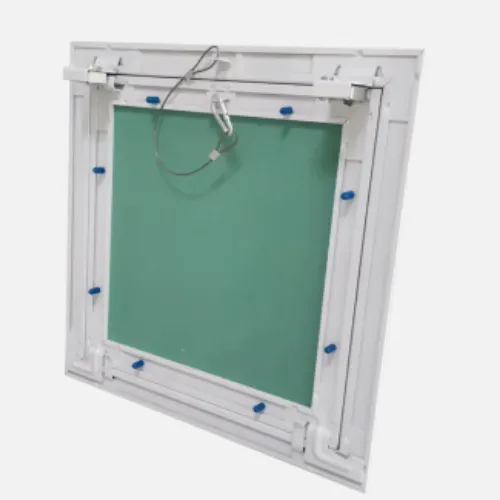8 月 . 09, 2024 01:25 Back to list
Installation Guide for Access Hatches in Drywall Ceilings for Easy Maintenance and Inspection
Access Hatches for Drywall Ceilings A Comprehensive Guide
Access hatches are essential components in modern building design, particularly when dealing with drywall ceilings. These hatches provide convenient access to vital areas such as plumbing, electrical systems, and HVAC components, ensuring that maintenance and repairs can be performed quickly and efficiently. This article explores the significance of drywall ceiling access hatches, their types, installation procedures, and the benefits they bring to both homeowners and commercial building managers.
Understanding Access Hatches
An access hatch is a door or panel installed in a wall or ceiling, allowing entry to concealed spaces. In the context of drywall ceilings, these hatches are often used to provide access to utilities hidden above the ceiling line. Without them, accessing critical systems would require more invasive measures, potentially damaging the drywall and incurring additional repair costs.
Types of Access Hatches
Access hatches come in various sizes and styles, accommodating different needs and aesthetic preferences. Here are a few common types of access hatches used in drywall ceilings
1. Standard Access Hatches These hatches are typically square or rectangular and are designed to fit within standard ceiling grids. They are often made from materials like metal or plastic and can have hinged or removable panels.
2. Fire-Rated Access Hatches In commercial buildings, maintaining fire safety is crucial. Fire-rated access hatches are constructed with materials that can withstand high temperatures for a specified duration, ensuring compliance with fire safety codes while providing necessary access.
3. Acoustic Access Hatches In environments where noise control is vital, acoustic access hatches help maintain sound insulation while still allowing for necessary access. These hatches are designed to minimize noise transmission and can be particularly useful in theaters, studios, and conference rooms.
4. Access Panels with Lock Mechanisms For areas that require restricted access, such as electrical rooms or critical equipment spaces, access hatches with locks offer enhanced security. These panels often come with key or combination locks to prevent unauthorized entry.
drywall ceiling access hatch

Installation Process
The installation of drywall ceiling access hatches is a relatively straightforward process, yet it requires some expertise to ensure a clean finish and proper functionality
. Here are the basic steps involved1. Selecting the Location Determine where the access hatch needs to be installed, considering the location of utilities and the ceiling structure.
2. Cutting the Opening Use a drywall saw to cut an opening that matches the dimensions of the access hatch. Ensure that the cut edges are clean to avoid damage during installation.
3. Framing the Opening For larger hatches and in instances where additional support is needed, framing with wooden studs may be necessary to provide a sturdy base for the hatch.
4. Installing the Hatch Position the access hatch into the opening, ensuring it is level and flush with the ceiling. Secure it according to the manufacturer's instructions, which may involve screws or adhesive.
5. Finishing Touches After the hatch is installed, tape and mud the edges to blend it into the surrounding drywall, making it less noticeable.
Benefits of Installing Access Hatches
The advantages of installing drywall ceiling access hatches extend beyond mere convenience. They contribute to building maintenance efficiency, promote better organization of utilities, and enhance overall safety. Additionally, they can save time and money by simplifying troubleshooting processes and minimizing damage during repairs.
In conclusion, drywall ceiling access hatches are important features that facilitate maintenance in residential and commercial buildings. By understanding the types available, the installation process, and the benefits they offer, homeowners and facility managers can make informed decisions that enhance the functionality and longevity of their properties. Whether for routine maintenance or emergency access, having the right access hatch in place is essential for maintaining the efficiency and safety of any building.
-
Revolutionizing Interior Design with Ceilings t grid Suspended SystemNewsOct.29,2024
-
Revolutionizing Ceiling Design with ceiling access panel with Gypsum Tile WaterproofNewsOct.29,2024
-
Revolutionizing Interior Design with PVC Gypsum Ceiling: A Comprehensive GuideNewsOct.29,2024
-
Elevating Interior Design with High quality Mineral Fiber Ceiling TilesNewsOct.29,2024
-
Revolutionizing Interior Design with PVC Gypsum Ceiling: A Comprehensive GuideNewsOct.29,2024
-
Elevating Interior Design with High-Quality Mineral Fiber Ceiling Tiles: A Comprehensive GuideNewsOct.29,2024







